Age group 2 7 to 9 years old
Body
Detailed knowledge is needed
Your own body and the bodies of others are exciting! However, exploration and discovery are now done more covertly, as the sense of modesty has set in.
For many children, primary school is a time when they like to acquire a lot of detailed knowledge (about dinosaurs, for example). Therefore - and also because physical maturity can start very early and should not surprise the children - now is a good time to talk in a child-friendly way about the visible and invisible changes that their bodies will undergo in the next few years.
Many children in this age group are interested in physical changes during puberty. This may be because they have older siblings, notice that adults look different from children, or because they are confronted with it in films and advertisements.
In the following we provide you with examples of typical topics in a puberty talk. You will find ideas on how to initiate or conduct a conversation. You are welcome to use the answers written in green when dealing with your children.
"When you go from being a girl to a woman or a boy to a man, many things change in and on your body. What do you notice that is different in adult women and men than in children?"
You will probably find that the children notice quite a lot, for example:

"Women have breasts."
"The area around the nipples may start to become more sensitive, the nipples may "itch" occasionally. It may also be that one breast starts to grow earlier than another. This is completely normal. Boys may also experience (temporary) breast growth, this is not unusual."

"Hair grows down there."
"Leg hair starts to grow as early as childhood. Later, hair also grows in the armpits and on the vulva or around the penis and scrotum. But it does not grow as much as the hair on the head, it stays short, is often curly and wirier than the hair on the head. Some people shave these areas, others do not. It is up to you to decide."

"Women have periods."
"Beginning then when girls reach puberty, they bleed from the vagina about once a month. This happens because a "nest" is being prepared in the uterus for a baby - that means the uterus is being "padded out" (building up the mucous membrane). Since this nest always has to be fresh, if there is no baby growing inside, it is mixed with some blood and leaves the body through the vagina. Then a new nest is built."
Especially at the beginning of puberty, menstruation is often irregular and even in adulthood the cycle can vary greatly from person to person.
By primary school at the latest, children are curious about where they came from. For many, it is already a question before that - for example, when a sibling arrives.
"Where do babies come from?"
"Most babies are born like this: when a man and a woman love each other very much, they kiss, they cuddle together, maybe naked, and the closest you can cuddle is when the penis goes into the vagina. Then when they continue to cuddle, a lot of sperm comes out of the penis and when it meets an egg, a baby can be born."
Discuss older teenagers or adults having sex with each other simply because it makes you feel good - not because you have to make a baby every time.


"What does gay mean?"
"When two men love each other."
"What does lesbian mean?"
"When two women love each other."
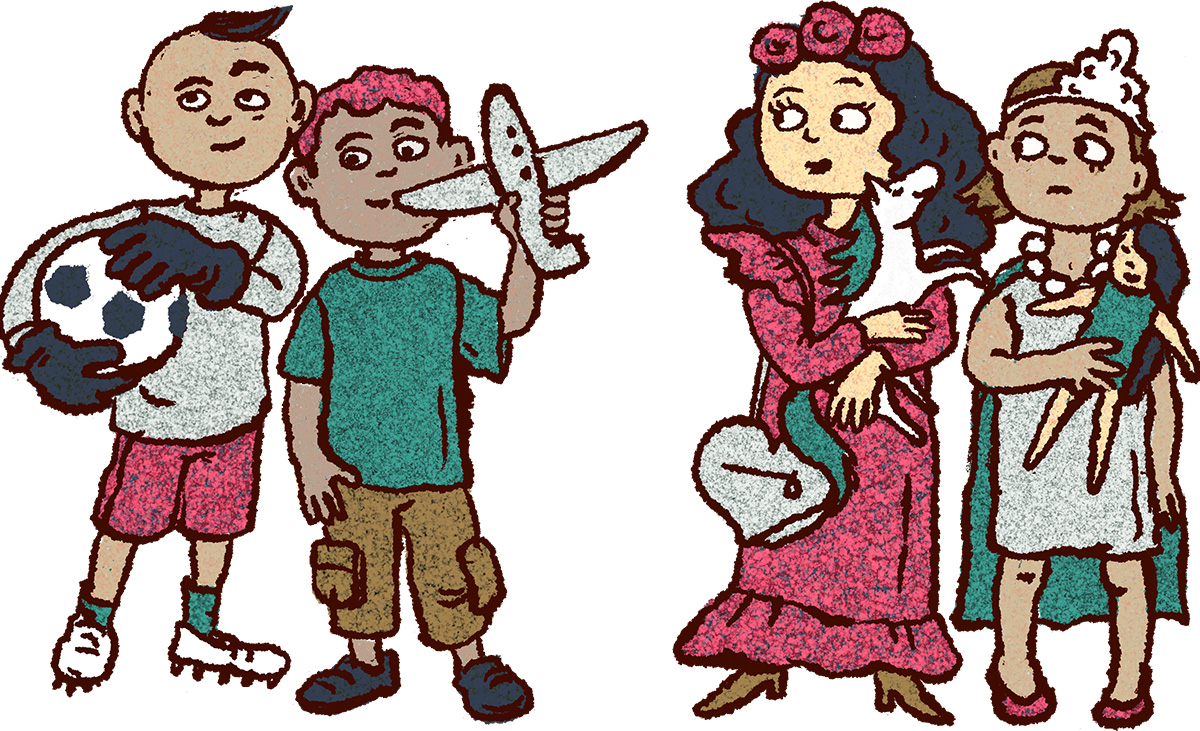
Identity
Children internalise gendered expectations
Imitation and observation play an essential role in children's learning. In early childhood, girls, just like boys, analyse what behaviour is valued positively in one case and sanctioned in another. For example, some parents unconsciously allow their daughters to test their limits less often. Boys, on the other hand, are often expected to climb to the top of the climbing frame. Our shopping behaviour also plays a role that should not be underestimated.
Nowadays, every shop divides its products according to gender. Some products convey very clearly what is expected of girls and boys: Girls should be beautiful and smile, boys should go through life wild, free and brave. This produces stereotypes that ensure that there are seemingly masculine and feminine colours, toys and sports. The generalisation is that all members of one gender like the same thing by default. This gender marketing helps the economy and restricts our children from experiencing diversity and trying things out.
What can you do?
Try to question why there are boys' and girls' colours and have an open dialogue with your child. Encourage them to try other products and be open to their wishes.
This socially and economically justified division can also prevent intersex children from being able to find a place for themselves and trans children become aware very early on that they have to slow down their physical development. Trans children often react to this pressure with eating disorders in order to prevent the development of the female body and the onset of the first period. One option that can help your child is the use of puperty blockers. These are prescribed by a doctor and slow down puberty. This allows the child to calmly develop a positive body image.
Sexual orientation is diverse
The term sexual orientation describes a person's desire with respect to the sex of a desired partner for sexual activity. There are a number of different variations:
- Asexual: no sexual attraction, regardless of gender.
- Bisexual: attracted to both men and women.
- Heterosexual: attracted exclusively to the opposite sex
- Homosexual: attracted only to one's own sex (other terms are also used for this, for example gay or lesbian).
- Pansexual: falling in love with people regardless of their gender.
Increasingly, children encounter various alternative family models in our society, e.g. the classic family, patchwork families, single-parent families or rainbow families, i.e. families in which at least one parent is lesbian, gay, trans or intersex. If children have questions at this point, the topic of sexual orientation quickly comes up. Your child will also notice other family structures (e.g. on the street or at home with friends). You can help them to understand that the diversity of families is just as normal as the diversity of partners. The important message is that everyone has the right to make their own decision and trust their own feelings.
For most people, sexual orientation is a central aspect of their personality. It not only describes who one is attracted to, but also includes individual experiences and personal feelings. Moreover, sexual orientation also has meaning for people on the outside: assumptions and hopes, values and possibly even prejudices come with it. Encourage your daughters and sons in this age group to accept others as they are and not to judge them hastily.
What can you do?
Read books together with your child that address the topic of sexual orientation. A reading tip would be: "Sex is a funny word: a book about bodies, feelings, and YOU" by Cory Silverberg/Fiona Smyth (2015). The 162-page book deals with "sexuality" with the help of comic drawings. The author and the illustrator sensitively address various physical and psychological aspects and facets that people associate with this topic and depict the versatility of the subject. The book offers itself as a medium in the everyday life of children and adolescents, as it provides new ideas again and again to get into conversation about the topic of sexuality, body and love (ISBN: 978-1609806064).
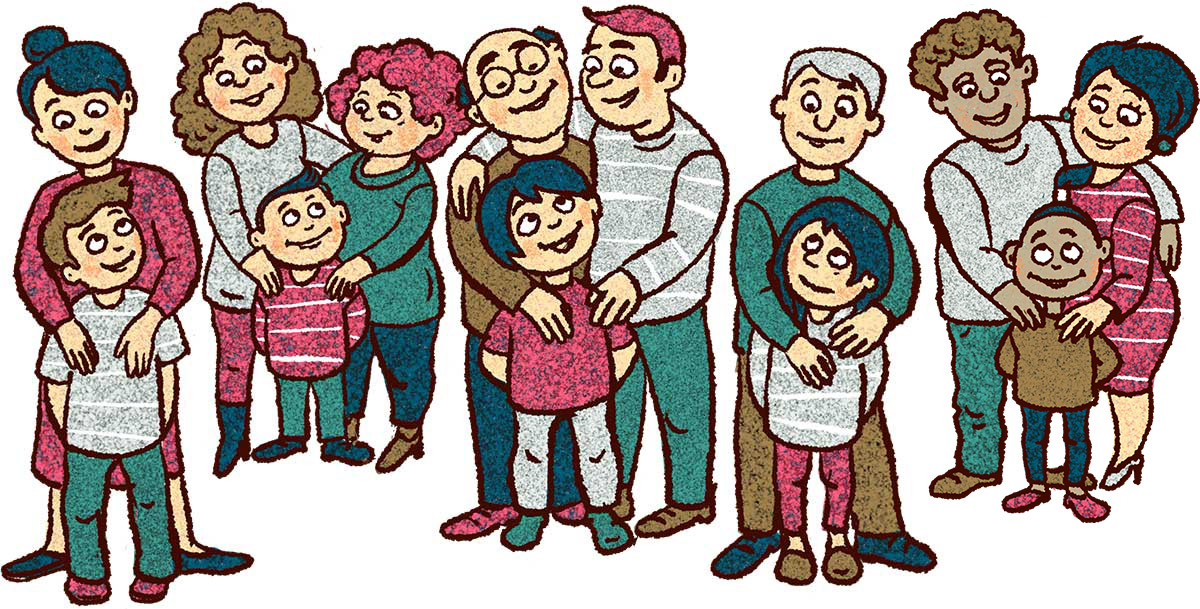
Feelings
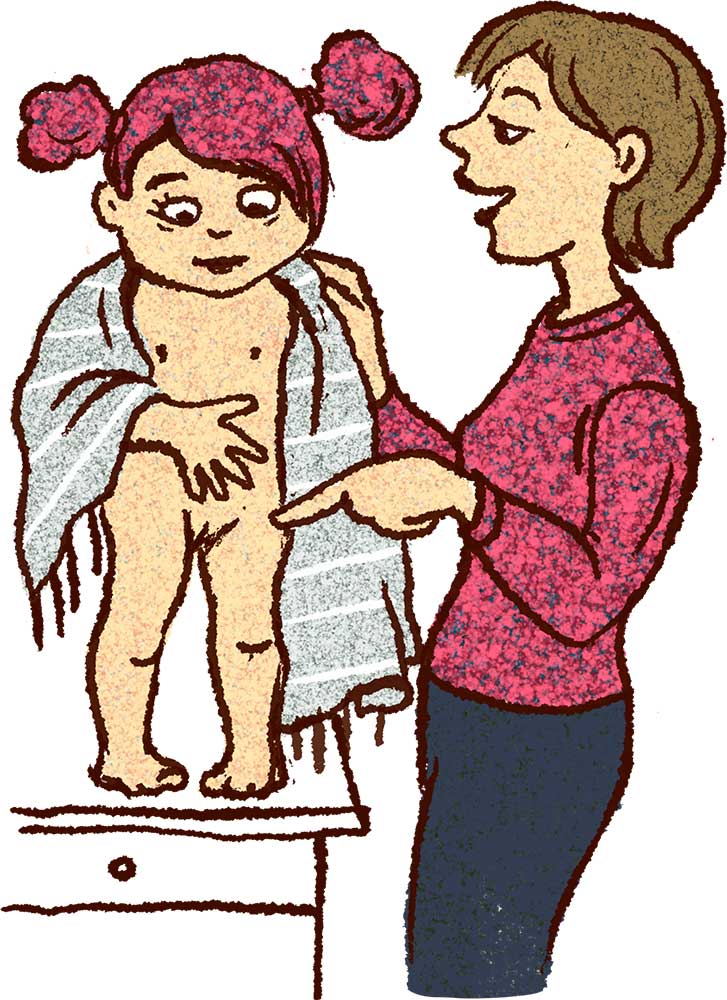
From the ages of 7 to 9, children start to become more and more independent. Nevertheless, parents are still very important attachment figures in the child's life. This is reflected in the fact that children become more independent on the one hand and seek out the familiar caregiver for cuddling on the other. When cuddling, children also like to immerse themselves in stories and fantasy worlds. There is often a smooth transition between fantasy and reality. The content of their fantasies can be friendship, love and falling in love with someone else. This is also the case with 5-6 year-olds.
At preschool age, children also begin to learn about emotions such as shame, guilt, envy and pride. These social emotions are self-referential. To form these emotions, it requires previous mental developmental steps and an understanding of various simple emotions. By experiencing and learning their own emotions, triggered in certain situations, they also develop an understanding of emotions towards others.
The development of the sense of shame is especially noticeable. Children feel increasingly uncomfortable when they are seen naked by people other than those they are familiar with. In addition to shame, privacy also increases and children will make it clear what information they want to give to which people. This privacy can also be expressed to familiar caregivers. Here, the caregiver should remain understanding and respect the child's decision.
The childlike curiosity will remain intact
Children will still have lots of questions about procreation and sexuality. These questions will become increasingly concrete, also influenced by contact with other children and contact with the media. Often the questions give the impression that the child already has knowledge about the question asked. However, the motive is often the search for attention from parents or caregivers and the thirst for knowledge. Children increasingly notice that adults no longer answer concrete questions as openly as they used to. In their search for answers, they seek out peers and increasingly turn to the internet for information.
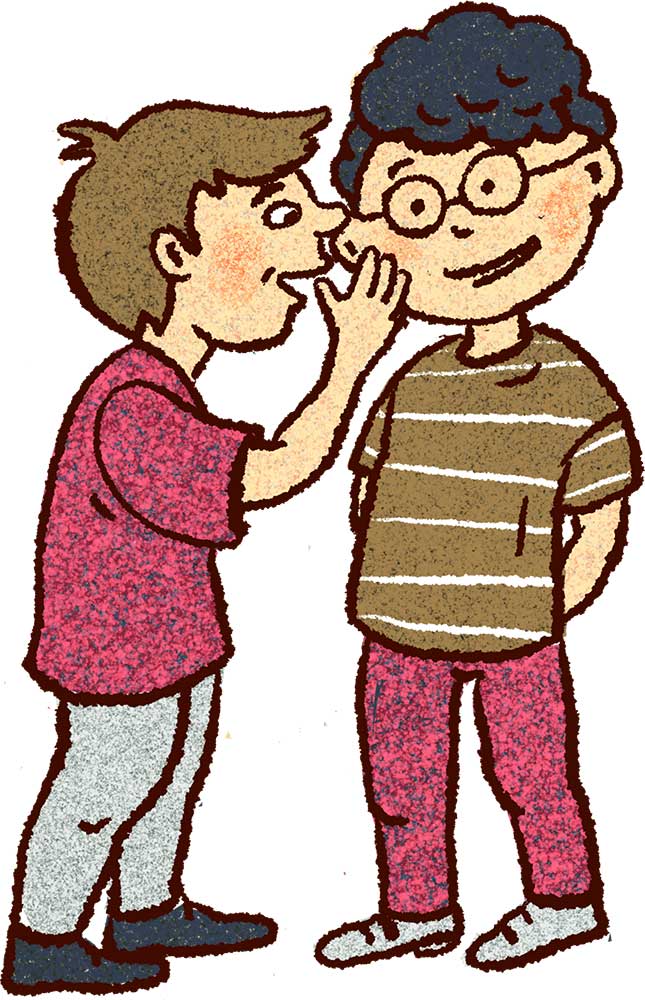
Secrets as a component of one's autonomy
As the age of seven to nine years progresses, secrets remain an important component in the development of one's autonomy. At this age, some children add more secrets that arise from their everyday lives. These may include experiences from school or adventures with other children. It is important to show openness and trust and to offer opportunities to share ideas. Secrets should not be judged, because this could convey an evaluation of the feelings and the person. This could lead to the child looking for other people to share a secret with next time. If there are no other confidants in the immediate vicinity, the child will not have the opportunity to share. The child can withdraw as a result.
Relationships change
At this age, children have strong feelings of friendship or even express that they are in love with someone. This affection can be for the teacher, the educator, the pet or another child. The feelings can be very strong, even resulting in missing someone. Parents should take every feeling of the child seriously, value it and support it lovingly. During this phase, children should learn to distinguish between different types of relationships such as friendship, love relationships and lust.
What can you do?
You can view this period with all the unpleasant and specific questions as an opportunity. Use the questions to give your child good answers and specific correct information. Children are very curious and seek information and answers no matter where they are. If you provide child-friendly answers or refer to children's books, it will help protect children from bad information from the internet or other sources.
Through their experience of friendships, children acquire social skills in which there is no power imbalance and no relationship of dependency. At this age, children increasingly relate to their own gender, it is about a constant balancing between independence and adaptation. But it is also about jealousy, separation and building new friendly relationships. By trying out and experiencing these relationships, the child will be able to live positive and healthy relationships and partnerships as they grow older.
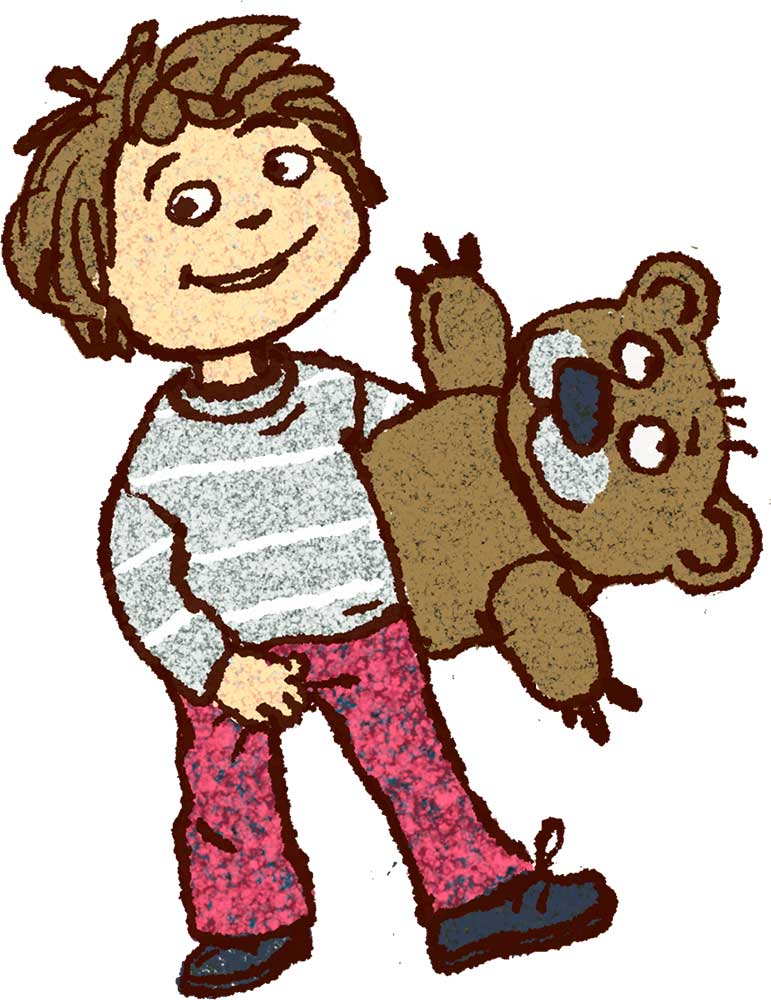
Love
The start of school marks the beginning of a time when children want to explore and understand the world around them in new ways. As parents, you have to expect questions about sexuality, sex, pregnancy and birth. Children are increasingly exposed through the media to the fact that sexuality is often the subject of advertising posters, on television or on the internet.
Even before children enter puberty, it is a good idea to start a conversation with them. Children are curious, ask questions and are willing to listen. As parents, you are a source of information and a contact person - this can change when the children reach pre-adolescence. On the one hand, you become more important as a conversation partner and provider of knowledge, on the other hand, children usually tend to hide their activities and withdraw. This withdrawal is an important step towards independence. Part of this retreat involves feeling that one's own body and sexuality are a private matter. As parents, be sure to respect your children's boundaries. Find out when restraint is appropriate and in which situations support or conversations are needed.
Remember that as parents you are role models. How you behave towards your partner or your own body will be perceived by your children. Be authentic in what you say and do. You do not have to be a perfect role model, it can have the greatest learning effect when children see how to deal with problems and the gap between desire and reality.
Intimacy and feelings of shame
Intimacy within the family is something the child experiences throughout its life. As a baby, it was stroked and cared for. As a child, it sleeps in its parents' bed or accompanies its parents in the bathroom. Despite this lack of self-consciousness, as the child grows older, doubts creep in as to if the intimacy between parents and child is too much. No line should be crossed or privacy violated. Respect the child's feelings of shame here. These feelings of shame are not something prudish or uptight. They determine which body-related actions (such as going to the toilet or taking a shower) belong in public and which do not. In this way, they create an intimate sphere and offer the child protection. On the one hand, they are able to separate themselves from others, and on the other hand, they can adapt to the social norms within society.
For many children, the following situations are embarrassing:
- Dressing and undressing
- Personal hygiene
- Bathing or showering
- Exploration games and self-stimulation
- Cleaning up after going to the toilet

Setting limits and showing boundaries increase in children as they grow older. This is how they build their privacy. Children learn that every person has a right to privacy and that it is okay to set boundaries.
Education about fertility, reproduction and contraception
Six- or seven-year-old children can usually explain the physical difference between women and men. They know that women have a vulva and men a penis. They usually begin to understand the connection between procreation and pregnancy a little later. Children assume that adults only have sex when they want a child. The connection between sexuality and desire is usually not explained to them because it is usually easier for parents to educate them about reproduction. Education about fertility, reproduction and contraception should take place before the onset of puberty.
Menstruation can start at the age of nine or ten for some girls. For many girls, their first period does not cause any discomfort, it arrives suddenly. Explain to your child what is going on in their body, what they can expect from now on and how they should deal with menstruation.
The role of the media
Children come into contact with media more and more: they watch TV more often, read magazines and books or surf the internet. Unable to prevent this, children come into contact with a wide variety of images and information about sexuality. Children do not understand most of the sexual innuendos in films or on advertising posters, they mainly notice that the depiction has something to do with sex. This leads to questions or irritation. As parents, you should be attentive to children's media consumption. A negative phenomenon is that children's first contact with pornographic material can happen at an earlier age. Films are not infrequently shared via mobile phone and watched together in the schoolyard or on the school bus. This cannot be prevented. Age-appropriate and complete education of children is very important.
What can you do?
Read magazines or books together, watch TV programmes or surf the internet together. Some advice can help them:
- Agree on firm rules for watching TV and surfing the internet. What can be watched? Which pages are taboo? When should the TV or computer be switched on and off again?
- Pay attention to the age rating of films, TV programmes or computer games.
- Guide your child during their first use of the internet. Explain possible dangers such as pornography sites or advertisements, fee-based services and how to handle confidential data. You can install filter programmes and together with your child find internet sites and search engines that are suitable for children.
- Discuss the media consumption of your child with family members and friends. What rules should be followed, what limits should be observed?
Sexual violence
Parents need to be aware of the issue of sexual violence against children. It is important to take preventive action without panicking. Children should learn to know their limits, to say no and to get help and support in an emergency. Sexual assaults are sexual acts that massively and/or deliberately violate the child's personal boundaries. This starts with subtle touching, glances or remarks and goes up to deliberate touching of children's breasts, buttocks or genital area. Forcing children to touch adults or adolescents intimately or to watch them watching pornography or pleasuring themselves also counts as sexual assault. Particularly serious forms are attempted or performed oral, vaginal or anal rape. Be aware that child sexual abuse is usually not random but carefully planned. The perpetrator builds a relationship with the child and often with the parents, usually over a long period of time. Sexual assaults often take place within the family and their social circle, which is why confidants outside these circles are of particular importance for the children in order to be able to get help in case of need. It usually starts with minor assaults and threats to see if the child keeps quiet. As parents, it is often difficult to talk about sexual violence. The child should be protected without being frightened.
What can you do?
- Teach your child to trust their feelings. Children can distinguish pleasant and unpleasant touches and perceive their boundaries. If these boundaries are violated, the child must have the skills to defend themselves, to shout "No!" loudly and to seek help and support.
- Talk to your child about the fact that there are young people and adults who want to take advantage of children. It is not the child's fault, the responsibility always lies with the adult, never with the child.
- Explain to your child the difference between good and bad secrets. Some secrets cause tummy aches because you are not supposed to talk about them. The child may tell these secrets to people they really trust.
The behaviour of children who have experienced sexual violence varies greatly depending on their age and personality. Only a few children will say outright when they have experienced sexual violence, they tend to give hints because they lack the right words for what has happened. This is precisely why the hints are often not understood correctly. Be aware that children do not invent sexual abuse on their own.
What can you do?
If you suspect that your child has experienced abuse, you should take this feeling seriously and follow it up.
- Find a trusted person that you can talk to.
- Show your child that they can talk to you.
- Say that you are worried because you have noticed changes.
- Stay calm and give your child permission to talk about good and bad secrets. Communicate that getting help is not tattling or a betrayal. Make your child feel that you believe him or her.
- Do not pressure your child.
- Let them know that you know about stressful situations and that you are resilient.
- Never confront the possible perpetrator.

